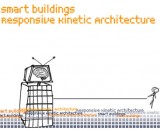Supervisor:
Technology
2007
This study introduces and defines the term Smart Buildings. A Smart Building is a structure that embodies technological innovations and has the ability to respond in real time to the user’s desires. The detection of users’ needs and their satisfaction comprise the basic motive for a Smart Building creation. The advantages that a user enjoys are comfort, pleasure, security, saving energy, productivity, and increase lifetime of the building.
Basic parameter for the study constitutes the human factor and so the relation between the user and the building is being examined. Intention is the quest of intelligent environment’s abilities and as well the optimum user’s communication with the building.
Through a historical flashback from the age of the machine to the age of information and image, from Lewis Mumford approaches and history of architecture, first conclusions about smart buildings’ course are derived. McLuhan’s theory about new technologies defines the relationship between man-user and intelligent environments.
The study focalizes in the definition of the Smart Building and disjoins it from a conventional building. Their difference is localized at the user’s communication with the building and at the active respond and the services that can provide. A Smart Building can correspond statically or with motion. As statical correspond can be described the automation on light control, heating control, ventilation, the image and sound management. The structure that the active respond is accomplished by motion, represent a new reality in architecture. Responsive Kinetic Architecture is called the structure that mutate it’s formation in real time in order to correspond in a different operating program. A structure like this is resembled to the human nervous system, as it can pump stimulus and command for reaction.
A smart building’s system function accord to the procedure: information input – analysis, process – output, respond. The field of communication in smart buildings is not restricted at the user’s contact. A smart building is able to receive information from the outdoor environment and adapt in proportion with it, for the best function of the indoor space.
The issue that this study treats is new enough at the architecture field to find efficient bibliography. This was about architectural projects, indicant to the research that take place, with conventional constructions, that respond statically and with constructions that respond kinetically. A questionnaire’s composition aims at giving answers, concerning the smart building’s design, it’s aesthetic, the grade of flexibility and users’ management.
